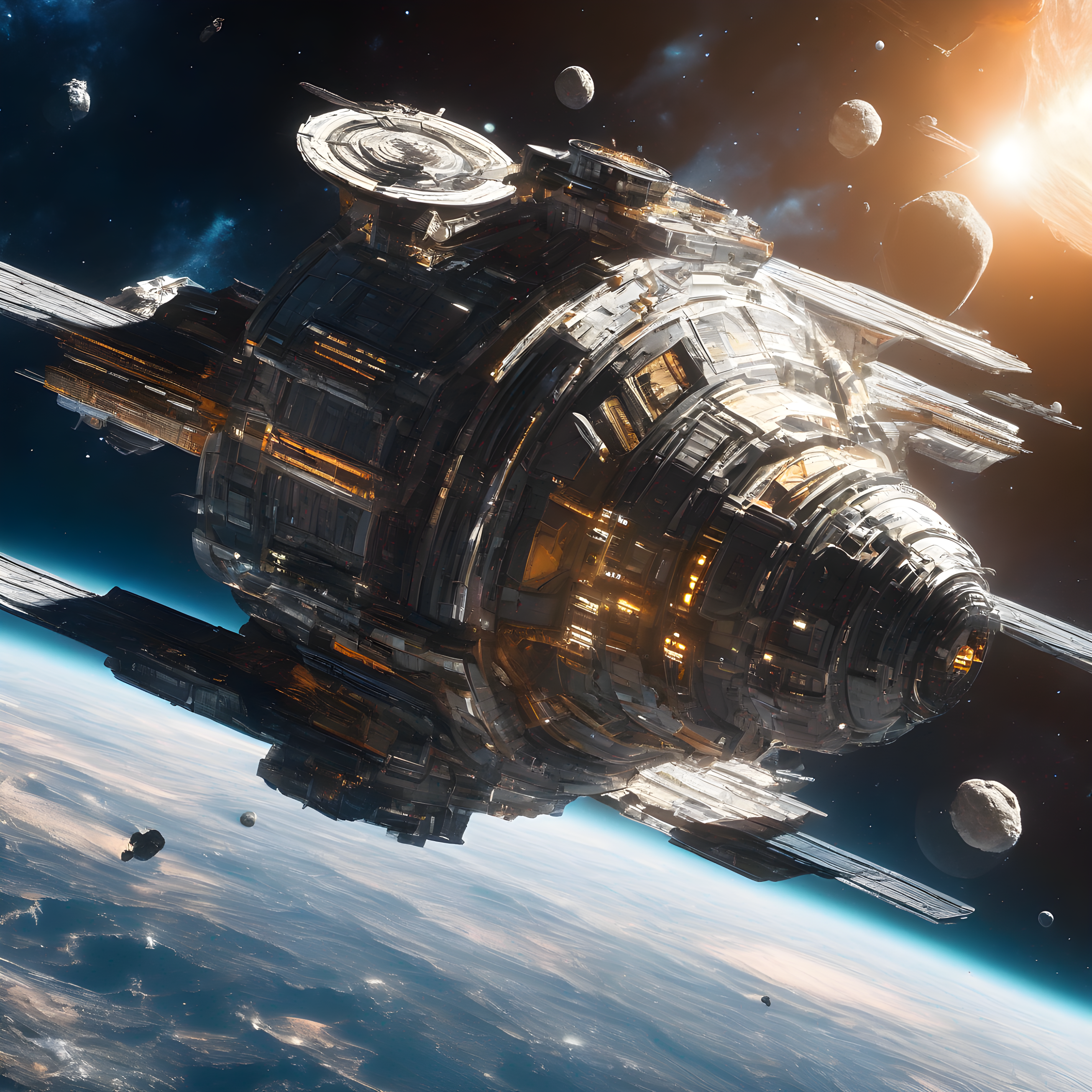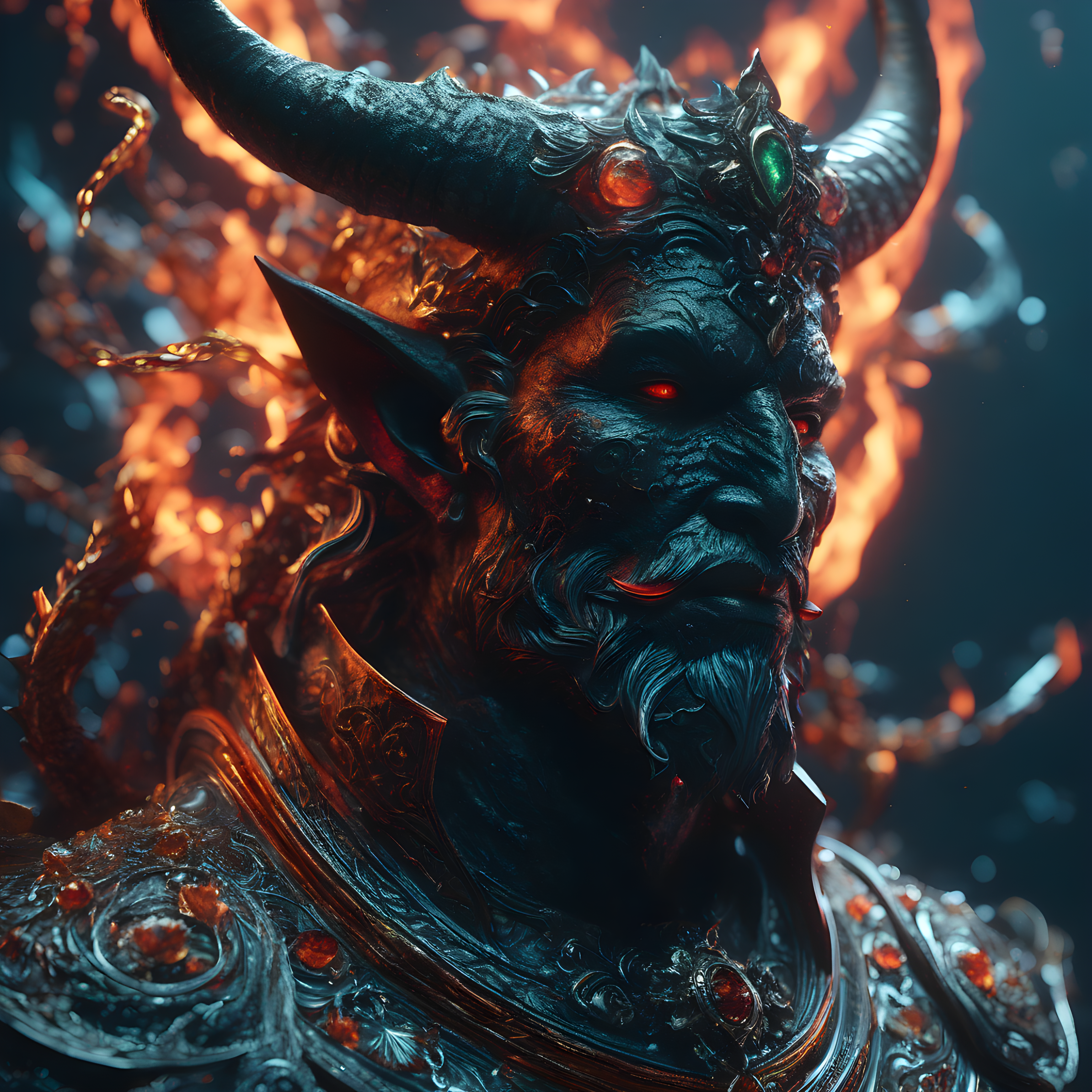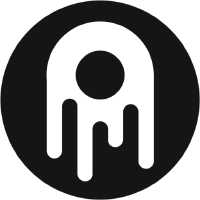astra
Maintainer: lorenzomarines

1

| Property | Value |
|---|---|
| Run this model | Run on Replicate |
| API spec | View on Replicate |
| Github link | No Github link provided |
| Paper link | No paper link provided |
Create account to get full access
Model overview
astra is a powerful AI model like Midjourney v6 and DALL-E 3, but it is open and decentralized. It is maintained by lorenzomarines. astra can be compared to similar models like stable-diffusion, sdxl, lora, sdxl-lora-customize-model, and openjourney, all of which are text-to-image generation models.
Model inputs and outputs
astra takes a variety of inputs, including a prompt, an optional input image, a mask, and various parameters to control the output. The model can generate multiple images based on the input prompt and other settings.
Inputs
- Prompt: The text prompt that describes the desired image.
- Image: An optional input image for use in img2img or inpaint mode.
- Mask: A mask image that specifies the areas to be inpainted.
- Seed: A random seed value to control the output.
- Width/Height: The desired dimensions of the output image.
- Scheduler: The scheduler algorithm to use for image generation.
- Guidance Scale: The scale for the classifier-free guidance.
- Num Inference Steps: The number of denoising steps to perform.
Outputs
- Image: The generated image(s) in the requested size and format.
Capabilities
astra is a powerful text-to-image generation model that can create a wide variety of images based on the input prompt. It can generate photorealistic images, stylized artwork, and imaginative scenes. The model is capable of performing tasks like inpainting, where it can fill in missing or damaged areas of an image.
What can I use it for?
astra can be used for a variety of creative and practical applications, such as generating concept art, illustrations, and product visualizations. The model's decentralized and open nature make it accessible to a wide range of users, including artists, designers, and hobbyists. With its impressive capabilities, astra can be a valuable tool for anyone looking to create unique and engaging visual content.
Things to try
With astra, you can experiment with different prompts, input images, and model parameters to see how they affect the output. Try generating images with a wide range of styles and subject matter, and see how the model handles different types of requests. You can also explore the model's inpainting capabilities by providing input images with missing or damaged areas and seeing how astra fills them in.
This summary was produced with help from an AI and may contain inaccuracies - check out the links to read the original source documents!
Related Models

d-journey

1
d-journey is a text-to-image generation model by lorenzomarines that aims to provide an open and decentralized alternative to models like Midjourney v6 and DALL-E 3. It is similar in capabilities to models like astra, stable-diffusion, openjourney, and openjourney-v4. Model inputs and outputs d-journey is a text-to-image generation model that takes in a prompt and various parameters to control the output image. The inputs include the prompt, image size, number of outputs, guidance scale, and more. The model outputs an array of image URLs that can be used in downstream applications. Inputs Prompt**: The text prompt describing the image to generate Negative Prompt**: An optional prompt to exclude certain elements from the generated image Image**: An optional input image for inpainting or image-to-image generation Mask**: An optional input mask for inpainting, where black areas will be preserved and white areas will be inpainted Width/Height**: The desired dimensions of the output image Num Outputs**: The number of images to generate Guidance Scale**: The scale for classifier-free guidance Num Inference Steps**: The number of denoising steps to take Outputs Image URLs**: An array of URLs pointing to the generated images Capabilities d-journey is capable of generating high-quality, photorealistic images from text prompts, similar to Midjourney v6 and DALL-E 3. It can also perform inpainting tasks, where the model can fill in missing or specified areas of an image based on the provided prompt and mask. What can I use it for? d-journey can be used for a variety of visual content creation tasks, such as generating images for marketing materials, illustrations for articles, or concept art for game and film development. Its open and decentralized nature makes it an interesting alternative to proprietary models for those seeking more control and transparency in their image generation workflow. Things to try Try experimenting with different prompts, prompt strengths, and guidance scales to see how they affect the output. You can also try using the inpainting capabilities by providing an input image and mask to see how the model fills in the missing areas. Consider exploring the use of LoRA (Low-Rank Adaptation) to further fine-tune the model for your specific needs.
Updated Invalid Date

sdxl-lightning-4step

453.2K
sdxl-lightning-4step is a fast text-to-image model developed by ByteDance that can generate high-quality images in just 4 steps. It is similar to other fast diffusion models like AnimateDiff-Lightning and Instant-ID MultiControlNet, which also aim to speed up the image generation process. Unlike the original Stable Diffusion model, these fast models sacrifice some flexibility and control to achieve faster generation times. Model inputs and outputs The sdxl-lightning-4step model takes in a text prompt and various parameters to control the output image, such as the width, height, number of images, and guidance scale. The model can output up to 4 images at a time, with a recommended image size of 1024x1024 or 1280x1280 pixels. Inputs Prompt**: The text prompt describing the desired image Negative prompt**: A prompt that describes what the model should not generate Width**: The width of the output image Height**: The height of the output image Num outputs**: The number of images to generate (up to 4) Scheduler**: The algorithm used to sample the latent space Guidance scale**: The scale for classifier-free guidance, which controls the trade-off between fidelity to the prompt and sample diversity Num inference steps**: The number of denoising steps, with 4 recommended for best results Seed**: A random seed to control the output image Outputs Image(s)**: One or more images generated based on the input prompt and parameters Capabilities The sdxl-lightning-4step model is capable of generating a wide variety of images based on text prompts, from realistic scenes to imaginative and creative compositions. The model's 4-step generation process allows it to produce high-quality results quickly, making it suitable for applications that require fast image generation. What can I use it for? The sdxl-lightning-4step model could be useful for applications that need to generate images in real-time, such as video game asset generation, interactive storytelling, or augmented reality experiences. Businesses could also use the model to quickly generate product visualization, marketing imagery, or custom artwork based on client prompts. Creatives may find the model helpful for ideation, concept development, or rapid prototyping. Things to try One interesting thing to try with the sdxl-lightning-4step model is to experiment with the guidance scale parameter. By adjusting the guidance scale, you can control the balance between fidelity to the prompt and diversity of the output. Lower guidance scales may result in more unexpected and imaginative images, while higher scales will produce outputs that are closer to the specified prompt.
Updated Invalid Date

lora

124
The lora model is a LoRA (Low-Rank Adaptation) inference model developed by Replicate creator cloneofsimo. It is designed to work with the Stable Diffusion text-to-image diffusion model, allowing users to fine-tune and apply LoRA models to generate images. The model can be deployed and used with various Stable Diffusion-based models, such as the fad_v0_lora, ssd-lora-inference, sdxl-outpainting-lora, and photorealistic-fx-lora models. Model inputs and outputs The lora model takes in a variety of inputs, including a prompt, image, and various parameters to control the generation process. The model can output multiple images based on the provided inputs. Inputs Prompt**: The input prompt used to generate the images, which can include special tags like `` to specify LoRA concepts. Image**: An initial image to generate variations of, if using Img2Img mode. Width and Height**: The size of the output images, up to a maximum of 1024x768 or 768x1024. Number of Outputs**: The number of images to generate, up to a maximum of 4. LoRA URLs and Scales**: URLs and scales for LoRA models to apply during generation. Scheduler**: The denoising scheduler to use for the generation process. Prompt Strength**: The strength of the prompt when using Img2Img mode. Guidance Scale**: The scale for classifier-free guidance, which controls the balance between the prompt and the input image. Adapter Type**: The type of adapter to use for additional conditioning (e.g., sketch). Adapter Condition Image**: An additional image to use for conditioning when using the T2I-adapter. Outputs Generated Images**: The model outputs one or more images based on the provided inputs. Capabilities The lora model allows users to fine-tune and apply LoRA models to the Stable Diffusion text-to-image diffusion model, enabling them to generate images with specific styles, objects, or other characteristics. This can be useful for a variety of applications, such as creating custom avatars, generating illustrations, or enhancing existing images. What can I use it for? The lora model can be used to generate a wide range of images, from portraits and landscapes to abstract art and fantasy scenes. By applying LoRA models, users can create images with unique styles, textures, and other characteristics that may not be achievable with the base Stable Diffusion model alone. This can be particularly useful for creative professionals, such as designers, artists, and content creators, who are looking to incorporate custom elements into their work. Things to try One interesting aspect of the lora model is its ability to apply multiple LoRA models simultaneously, allowing users to combine different styles, concepts, or characteristics in a single image. This can lead to unexpected and serendipitous results, making it a fun and experimental tool for creativity and exploration.
Updated Invalid Date

ai-toolkit

47
ai-toolkit is a collection of tools and utilities developed by Ostris for training and working with AI models, particularly related to the FLUX.1-dev model from Black Forest Labs. This toolkit includes features for batch image generation, LoRA and LoCON extraction, LoRA rescaling, and a LoRA slider trainer. The toolkit is designed to be modular, with the ability to create custom extensions that integrate with the framework. The ai-toolkit is similar to other LoRA training and management tools like the lora-training model from cloneofsimo, which provides presets for training LoRAs for faces, objects, and styles. It is also comparable to the flux-lora-collection from XLabs-AI, which provides a collection of trained LoRAs for the FLUX.1-dev model. Model inputs and outputs Inputs Prompt**: The text prompt used to generate images with the ai-toolkit. Outputs Image URI**: The generated image is returned as a URI, which can be used to retrieve the image. Capabilities The ai-toolkit provides a wide range of capabilities for working with AI models, including: Batch Image Generation**: The toolkit can generate batches of images based on prompts provided in a configuration file or text file. LoRA and LoCON Extraction**: The toolkit can extract LoRA and LoCON information from models, with support for various extraction methods like fixed, threshold, ratio, and quantile. LoRA Rescaling**: The toolkit can be used to rescale the weights of a LoRA, allowing you to adjust the effect of the LoRA on the base model. LoRA Slider Trainer**: The toolkit includes a slider training mechanism that allows you to train custom LoRAs that can be used as sliders in tools like Automatic1111. What can I use it for? The ai-toolkit is a valuable resource for researchers, developers, and artists working with AI models, particularly those focused on the FLUX.1-dev model. The batch image generation, LoRA and LoCON extraction, and LoRA rescaling features can be useful for tasks like model fine-tuning, dataset curation, and prompt engineering. The LoRA slider trainer is particularly useful for creating custom sliders that can be used to control specific aspects of generated images. Things to try Some interesting things to try with the ai-toolkit include: Experimenting with the various LoRA and LoCON extraction methods to see how they affect the resulting LoRA/LoCON. Using the LoRA rescaling tool to adjust the weight of existing LoRAs, allowing you to fine-tune their effect on the base model. Training custom LoRA sliders with the slider trainer, and incorporating them into your creative workflows. Developing custom extensions for the ai-toolkit to add new functionality, such as model merging or other specialized training tasks.
Updated Invalid Date